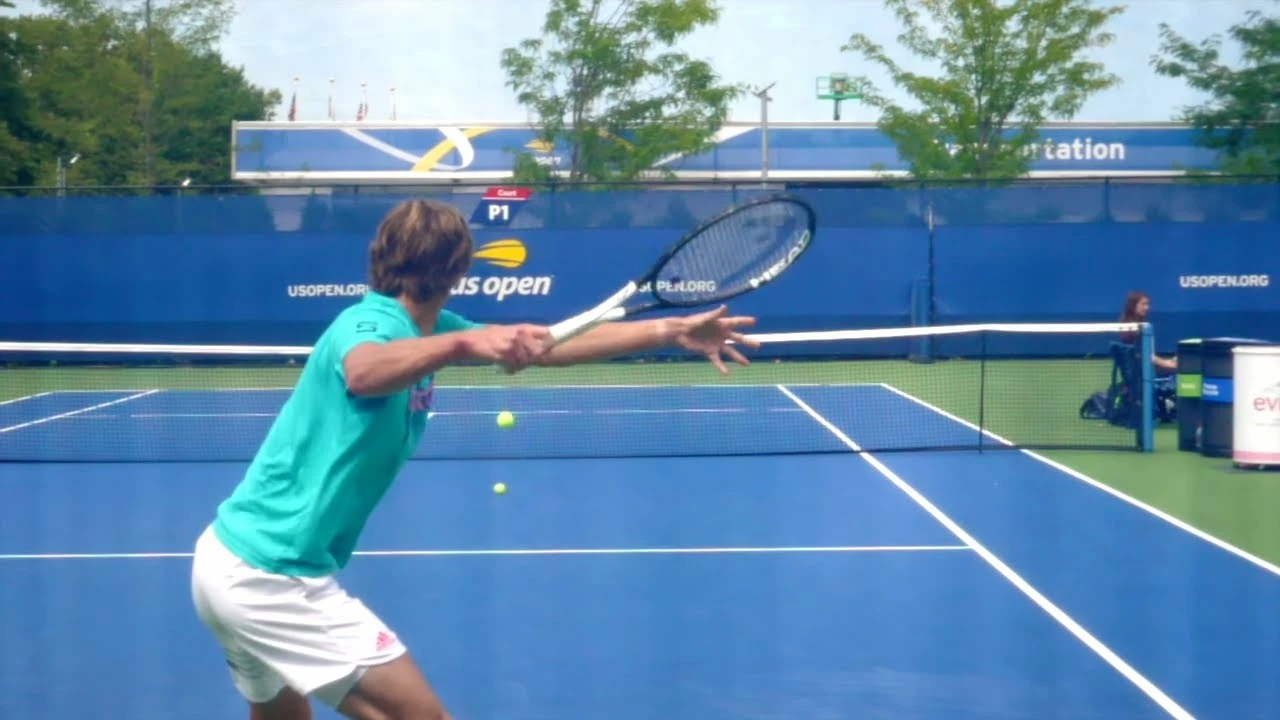Introduction: The Art of Swinging a Tennis Ball
As a tennis enthusiast, I have always been fascinated by the various techniques and strategies that players use to hit a tennis ball. From powerful serves to delicate drop shots, there is an endless variety of ways to swing a tennis ball. In this article, I will be discussing ten key aspects of swinging a tennis ball, which will help you improve your game and become a better player. So, let's dive right in!
The Grip: Finding the Perfect Hold
One of the most important aspects of swinging a tennis ball is how you hold the racket. The grip plays a significant role in determining the power, control, and spin you can generate on your shots. There are several different grips that professional players use, such as the Eastern, Western, and Continental grips. Each grip has its advantages and disadvantages, so it's essential to find the one that works best for you and your playing style. Experiment with different grips and pay attention to how each one feels in your hand and how it affects your shots.
Stance: Positioning Yourself for Success
Before swinging a tennis ball, it's crucial to adopt the correct stance. Your stance will determine the balance, power, and accuracy of your shots. There are two primary stances in tennis: the open stance and the closed stance. The open stance involves positioning your non-dominant foot parallel to the baseline, while the closed stance requires you to step forward with your dominant foot. Both stances have their advantages and should be used depending on the type of shot you're hitting. Make sure to practice both stances to become a more versatile player.
Backswing: Preparing for the Perfect Strike
The backswing is an essential part of swinging a tennis ball, as it sets the stage for a powerful and controlled shot. To execute a proper backswing, you should turn your shoulders and hips while keeping your eyes on the ball. This rotational movement generates power and helps you maintain balance throughout the swing. As you practice your backswing, focus on keeping it smooth and relaxed, avoiding any jerky or rushed movements.
Contact Point: Hitting the Sweet Spot
When swinging a tennis ball, it's crucial to make contact with the ball at the optimal point. The contact point is the moment when your racket meets the ball, and it determines the direction, spin, and power of your shot. To find the ideal contact point, you should aim to hit the ball in the center of your racket strings, also known as the sweet spot. This will give you the most control and power, allowing you to hit more accurate and effective shots.
Follow-Through: Finishing with Flair
An often-overlooked aspect of swinging a tennis ball is the follow-through. The follow-through is the continuation of your swing after making contact with the ball. It helps maintain the momentum and fluidity of your shot, ensuring that you generate maximum power and control. A proper follow-through involves extending your racket arm towards your target and allowing your body to rotate naturally. This will help you maintain balance and control while also adding a touch of style to your game.
Footwork: Quick Steps for Better Shots
Good footwork is essential for swinging a tennis ball effectively. Your feet help you move around the court, position yourself correctly for each shot, and maintain balance during your swing. To improve your footwork, focus on taking small, quick steps and staying on the balls of your feet. This will allow you to move more efficiently and react more quickly to your opponent's shots. Don't forget to practice lateral movements, as they are crucial for reaching wide balls and maintaining proper court positioning.
Timing: Striking at the Right Moment
Timing is crucial when it comes to swinging a tennis ball. Hitting the ball too early or too late can result in a weak shot or a complete miss. To improve your timing, practice watching the ball closely as it approaches your racket, and try to anticipate when it will reach the ideal contact point. Keep your eyes on the ball and trust your instincts to help you find the perfect moment to swing. With practice, your timing will become more consistent, resulting in better shots.
Spin: Adding a Twist to Your Game
Adding spin to your tennis shots can give you a significant advantage over your opponent. There are three main types of spin: topspin, backspin, and sidespin. Topspin is generated by brushing the racket strings upward on the ball, making it dip and bounce higher. Backspin is created by brushing the strings downward, causing the ball to float and bounce lower. Sidespin is achieved by brushing the strings from side to side, making the ball curve in the air. Experiment with different spins to add variety and unpredictability to your game.
Power vs. Control: Finding the Perfect Balance
When swinging a tennis ball, it's essential to strike a balance between power and control. Hitting the ball too hard can result in a loss of accuracy, while focusing too much on control may not generate enough power to challenge your opponent. To find the perfect balance, practice adjusting your swing speed and grip pressure depending on the situation. Over time, you'll develop a better understanding of when to prioritize power or control for the most effective shots.
Conclusion: Practice Makes Perfect
Swinging a tennis ball is an art that takes time and practice to master. By focusing on these ten aspects of the swing, you'll be well on your way to improving your game and becoming a more skilled player. Remember that progress takes time, so be patient and persistent in your practice. With dedication and hard work, you'll be hitting those powerful, accurate shots in no time!
